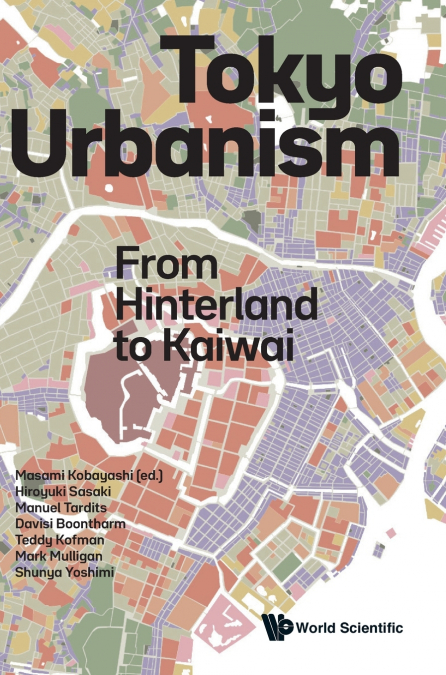
 Librería Perelló (Valencia)
Librería Perelló (Valencia)
 Librería Aciertas (Toledo)
Librería Aciertas (Toledo)
 Librería Elías (Asturias)
Librería Elías (Asturias)
 Donde los libros
Donde los libros
 El AlmaZen del Alquimista (Sevilla)
El AlmaZen del Alquimista (Sevilla)
 Librería Kolima (Madrid)
Librería Kolima (Madrid)
 Librería Proteo (Málaga)
Librería Proteo (Málaga)
Arguably one of the most iconic mega-cities in Asia, Tokyo, the capital of Japan, plays an important economic and cultural role. It has been featured in various media as a liveable city with a well-developed public transport system. Yet, what international media coverage often misses out are its unique neighbourhoods and districts. Known as kaiwai, they are scattered in a mosaic from downtown Tokyo to its suburbs, exemplifying a type of urbanism wholly unique to Asia and foreshadowing a future vision which suggests regional autonomy in a post-COVID-19 world.In this book, the authors thoroughly investigate the city’s multi-layered spatial and sociocultural aspects, introducing a side of Tokyo little known to the world at large. Readers who are only familiar with Tokyo’s depiction as an ultra-modern city will appreciate the book’s insights into the kaiwai phenomenon, the pre-modern urban structure of Edo city, and contemporary Tokyo’s Asian urbanism, including traditional community activities such as local festivals, the formation of new communities by old and new residents, and intimate community life using a network of alleys. Combining urban planning, sociological, anthropological and architectural perspectives, the book’s interdisciplinary approach looks at Tokyo from the peripherical to the kaiwai-level.